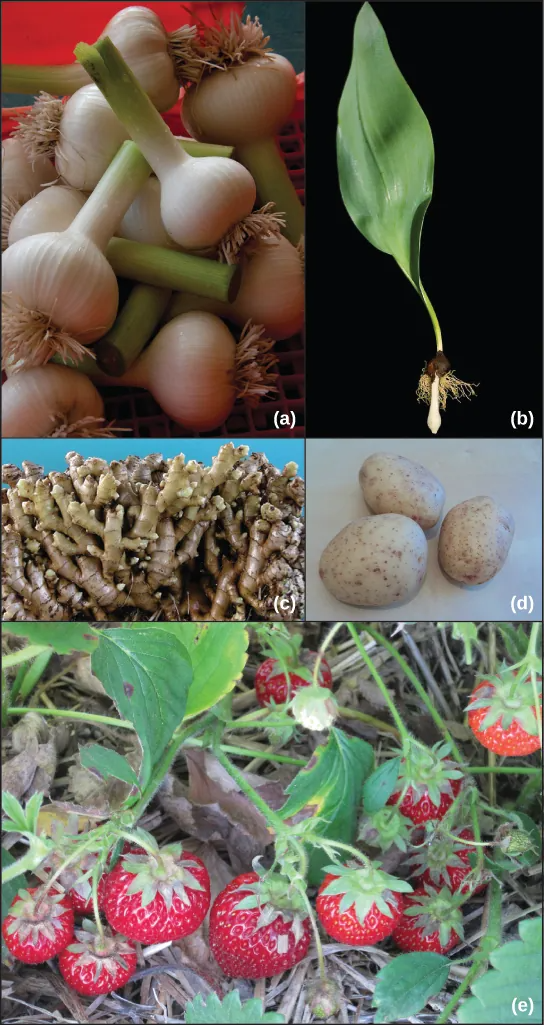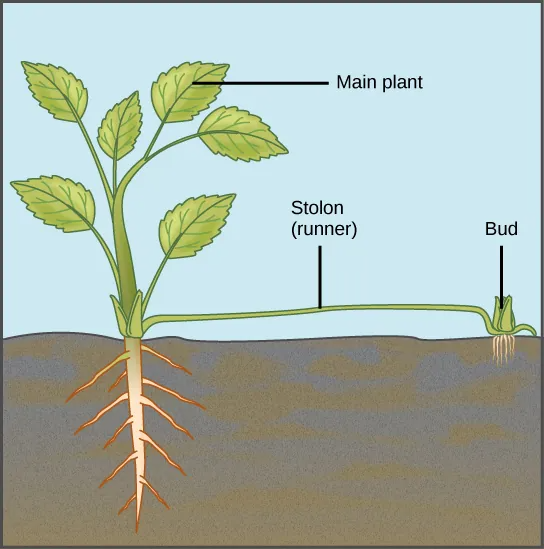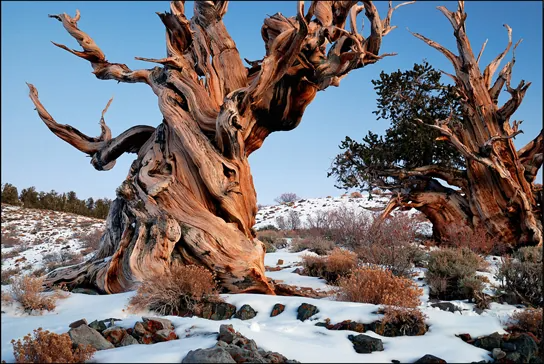32.3 Asexual Reproduction
Learning Outcomes
- Describe the mechanisms and methods of natural asexual reproduction
- Discuss plant life spans
Many plants are able to propagate themselves using asexual reproduction. This method does not require the investment required to produce a flower, attract pollinators, or find a means of seed dispersal. Asexual reproduction produces plants that are genetically identical to the parent plant because no mixing of male and female gametes takes place. Traditionally, these plants survive well under stable environmental conditions because they carry genes identical to those of their parents.
Many different types of roots exhibit asexual reproduction (Figure 32.24). The corm is used by gladiolus and garlic. Bulbs, such as a scaly bulb in lilies, are other common examples. A potato is a stem tuber, while parsnip propagates from a taproot. Ginger and iris produce rhizomes, while ivy uses an adventitious root (a root arising from a plant part other than the main or primary root), and the strawberry plant has a stolon, which is also called a runner.

Some plants can produce seeds without fertilization. Either the ovule or part of the ovary, which is diploid in nature, gives rise to a new seed. This method of reproduction is known as apomixis.
An advantage of asexual reproduction is that the resulting plant will reach maturity faster. Since the new plant is arising from an adult plant or plant parts, it will also be sturdier than a seedling.
Natural Methods of Asexual Reproduction
Natural methods of asexual reproduction include strategies that plants have developed to self-propagate. Many plants—like ginger, onion, gladioli, and dahlia—continue to grow from buds that are present on the surface of the stem. In some plants, such as the sweet potato, adventitious roots or runners can give rise to new plants (Figure 32.25). In Bryophyllum and kalanchoe, the leaves have small buds on their margins. When these are detached from the plant, they grow into independent plants; or, they may start growing into independent plants if the leaf touches the soil. Some plants can be propagated through cuttings alone.

Plant Life Spans
The length of time from the beginning of development to the death of a plant is called its life span. The life cycle, on the other hand, is the sequence of stages a plant goes through from seed germination to seed production of the mature plant. Some plants, such as annuals, only need a few weeks to grow, produce seeds and die. Other plants can live for thousands of years. Some bristlecone pines have a documented age of 4,500 years (Figure 32.29).

Plant species that complete their lifecycle in one season are known as annuals. Biennials such as carrots complete their lifecycle in two seasons. Perennials, such as the magnolia, complete their lifecycle in two years or more.

